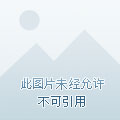The four words in the picture below, I believe there are many people who do not know. But in reality they are four words that almost all literate people know. Two of them can be found in dictionaries, and the other two cannot be found in general dictionaries.

Although these four characters are not common, they are not difficult to recognize for those who are familiar with the chinese character creation method. To be precise, it is enough to know the "huiyi" method in the "six books" that the ancients said.
The so-called "Six Books" are the rules and methods of making and using Chinese characters summarized and summarized by ancient scholars. They are: pictograms, meanings, pointing things, shape sounds, transfer notes, and false borrowings.
To truly understand traditional Chinese culture, we must read ancient classics, and if you read ancient classics, you cannot but understand Chinese characters. Therefore, for those who are interested in in-depth study of Chinese culture, the Six Books must be familiar.
The Qing Dynasty scholar Dai Zhen once said: "The six books are also the program of the text, and the zhijing is also involved." The books are extremely extensive, and the unified text is not foreign; although the writing is extensive, the unification does not exceed the six books. This means that the six calligraphy is the program of all Chinese characters, the ferry and bridge for learning the classics. The texts are extremely rich, and they boil down to nothing more than words; although there are many words, they do not go beyond the scope of the six books. It can be seen that understanding the Six Books and the Chinese characters constructed from them is very important for us to read ancient texts and learn traditional culture. One of the most important reasons for the academic achievements of the master of traditional Chinese studies, Zhang Taiyan, is that he has a profound foundation in writing. According to his grandson Zhang Nianchi, Mr. Zhang read the "Explanation of Words" 72 times in his lifetime. From this, we can also see that the basic knowledge of the text with the six books as the core is important for the study of traditional culture.
If you only recognize the above four words, then you only need to understand the "Six Books" of the "Six Books" will be enough. The so-called "Huiyi" method: Xu Shen, the author of the "Explanation of Words", explains it as "analogous friendship (righteousness) to see the fingering (waving)", which means that the Huiyi method is to combine several meaning-related texts or words to point to a new meaning. Xu Shen also gave two examples: the word "wu" and the word "faith." The word "wu" is a combination of a "stop" character and a "ge" character, which means to carry a ge to march; the word "faith" is a combination of two parts, "person" and "speech", which indicates what people say. There is also a belief of the writers here that people speak honestly, and if they are dishonest, they are not human words.
Okay, now let's go back to the four words in the top picture: the first is "heaven", which is composed of two parts, "qing" and "qi". "Qing" is also the etymology and omission of "Qing" of Qing Shui. According to the understanding of the ancients, this is the word "heaven". For in the minds of the ancients, heaven was formed by the light and clear qi separated from the chaotic state. This is the earliest and most simple materialist cosmology of ancient China.
By analogy, we can see that the remaining three words are "long", "earth", and "long". So the above four words together are "heaven and earth", do you feel very familiar?